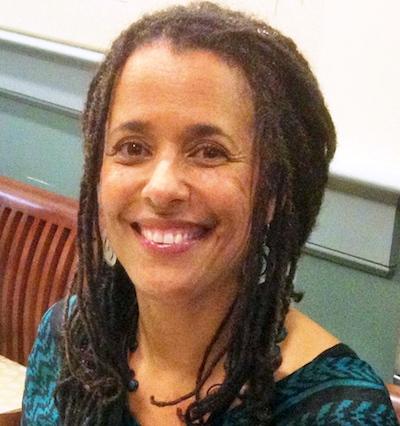
Carolyn Finney
Editor's note: The following column is from Carolyn Finney, professor of geography at the University of Kentucky, a member of the National Park System Advisory Board, and the author of “Black Faces, White Spaces.”
I can never go home again. The land that I grew up on, an estate not far from NYC that my parents cared for but that belonged to someone else, is now in the hands of a new owner and a new family entrusted with its care. That land, to some degree, told me who I am. The trees, the ground beneath my feet, and the wildlife provided the details to a family story that grew and changed over time, as family stories do. It held the particulars of my parents' journey from a small, southern town to New York in the 1950s, as a poor black couple with big dreams for themselves and their children. Without access to that story, it would be easy to feel unmoored, rootless, and insecure about my place, my past, and my future. Who am I? Where did I come from? What does the future hold?
But as I got older, my notions of “home” expanded. For years, I traveled around this country and found myself on public lands that also told my story. I didn’t understand this at first; I thought I was just looking at beautiful scenery or reading about a piece of history that happened to someone else. But at The Rosie the Riveter/World War II Home Front National Historical Park, I imagined myself as a “black Rosie” much like Ranger Betty Reid Soskin, who tells her story about contributing to the war effort. When I think about Flight 93 National Memorial, I remember that I worked in the World Trade Center towers many years before 9/11, and with my roots as a homegrown New Yorker, I find a way to connect to the people who died that day. As an African American who understood firsthand from my parents the importance of the civil rights movement and the legacy of slavery, the recent designations of the Harriet Tubman Underground Railroad Historical Park and the Penn Center on St. Helena Island feels like a profound acknowledgement of my family experience.
But here’s the thing: The stories about our public lands don’t have to be about African Americans or connected to New York or be about women in order for me to feel that they are part of my story. This country is my home. The stories of this country are my stories, too. Our shared histories embedded in these public lands are but reminders of all the ways we are human – how we struggle, work, pray, and love; how we have built our lives on the land and resources that give us what we need to thrive; and how we have always found a way to move beyond our perceived limitations to create new possibilities for ourselves and our children. Within those stories we can discover who we can become. And we can remember who we are.
In January, President Obama issued a Presidential Memorandum that encourages federal agencies to prioritize engaging all Americans in accessing and conserving our system of public lands and waters. It highlights the importance of having this nation’s greatest asset – its cultural diversity – represented in the workforce and visitors that care for and engage with our public lands. But what it also does, whether we are ordinary citizens or occupy the highest office in the land, whether our ancestors were borne out of this soil or we are newly arrived immigrants, it reminds us that this is our home and all of us contribute to the story of we, the people. I hope the new administration will honor and embrace this vision. Because there is no place like home.



Add comment